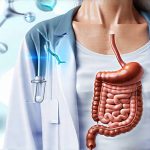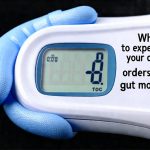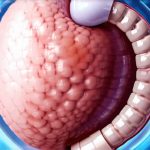Following an endoscopy or surgery involving the digestive system, your body needs time to heal. This often means adjusting your diet to minimize stress on the newly recovering areas. A soft food diet is frequently recommended because it’s gentle on the esophagus, stomach, and intestines. It requires less chewing, making digestion easier, and avoids irritating sensitive tissues. The duration of a soft food diet varies depending on the procedure you had and your individual recovery progress; always follow specific instructions from your healthcare provider, but this article will provide a comprehensive overview to help understand what to expect.
The goal isn’t just about avoiding discomfort—it’s about providing your body with the nutrients it needs to repair itself without causing further strain. It’s important to reintroduce foods gradually as you feel better and under medical guidance. Rushing back to a regular diet could lead to complications or set back your healing process, so patience is key. This dietary approach isn’t meant to be permanent; it’s a stepping stone towards full recovery.
Understanding the Soft Food Diet
A soft food diet doesn’t mean bland and tasteless! It simply means choosing foods that are easy to chew and swallow, and won’t irritate your digestive system. Think about textures – avoiding anything crunchy, chewy, or difficult to break down. This includes raw vegetables, tough meats, and even some fruits with skins or seeds. The focus is on well-cooked, tender options that require minimal effort from your body. Hydration remains crucial during this period, so sipping water throughout the day is very important.
The diet aims to reduce workload of the digestive system while providing essential nutrients. It’s not about restriction for the sake of it; rather, it’s a strategic approach to healing. A well-planned soft food diet can ensure you receive adequate calories and vitamins even when your usual eating habits are temporarily altered. Remember that individual tolerances vary significantly, so pay attention to how your body reacts to different foods.
It’s also helpful to understand why this is recommended after specific procedures. After an endoscopy (particularly one with biopsies), the esophagus might be sore. Following surgery, the digestive tract may need time to heal from incisions and altered function. A soft food diet minimizes irritation and allows tissues to recover without being constantly challenged by difficult-to-digest items.
Foods to Include & Avoid on a Soft Food Diet
There’s a surprising variety of foods that fit into a soft food diet! Excellent choices include well-cooked pasta, mashed potatoes (with butter or broth for extra flavor), yogurt, applesauce, scrambled eggs, and cooked cereals like oatmeal. Soups – particularly creamed soups or broths with noodles – are also great options. Tender fish, poultry without skin, and ground meat are generally well-tolerated. Smooth smoothies can be a convenient way to get nutrients.
On the other hand, there are foods you should avoid, at least initially. These include raw fruits and vegetables, nuts, seeds, popcorn, crunchy cereals, tough or fibrous meats (like steak), bread with crusts, spicy foods, highly seasoned dishes, and anything that causes bloating or discomfort. Carbonated beverages can also contribute to gas and irritation, so it’s best to limit them. Alcohol should be avoided altogether during the recovery period.
Gradually Expanding Your Diet
As you begin to feel better, you can slowly introduce new foods back into your diet, one at a time. Start with small portions and observe how your body reacts. If a food causes discomfort, remove it immediately and try again another day. This gradual approach helps identify any sensitivities or intolerances that may have developed as a result of the procedure or surgery. Don’t hesitate to keep a food diary to track what you eat and how you feel afterward; this can provide valuable insights into your recovery process.
This is also the time to focus on portion sizes. Even soft foods can cause discomfort if eaten in large quantities. Smaller, more frequent meals are often easier to digest than three large meals per day. Pay attention to your body’s signals – hunger and fullness cues – and adjust your eating habits accordingly. Remember that recovery isn’t linear; there may be days when you feel better than others.
Common Questions & Concerns
Many patients worry about getting enough protein on a soft food diet. It’s perfectly possible to meet your protein needs with options like yogurt, eggs, smooth nut butters (in moderation and if tolerated), tender fish, and ground meat. Another common concern is constipation. Ensuring adequate hydration and including fiber-rich soft foods – such as oatmeal or well-cooked vegetables – can help prevent this. If constipation persists, discuss it with your healthcare provider; they may recommend a mild stool softener.
Don’t be afraid to experiment within the guidelines provided by your doctor. There are countless variations of soft food recipes available online and in cookbooks. Finding meals you enjoy will make the dietary transition much more pleasant! The key is to listen to your body, be patient, and prioritize gentle nourishment during your recovery journey.
Ultimately, a soft food diet after an endoscopy or surgery is about supporting your body’s natural healing process. It’s a temporary adjustment designed to minimize discomfort and maximize nutrient absorption, paving the way for a swift and full return to your usual dietary habits.


















